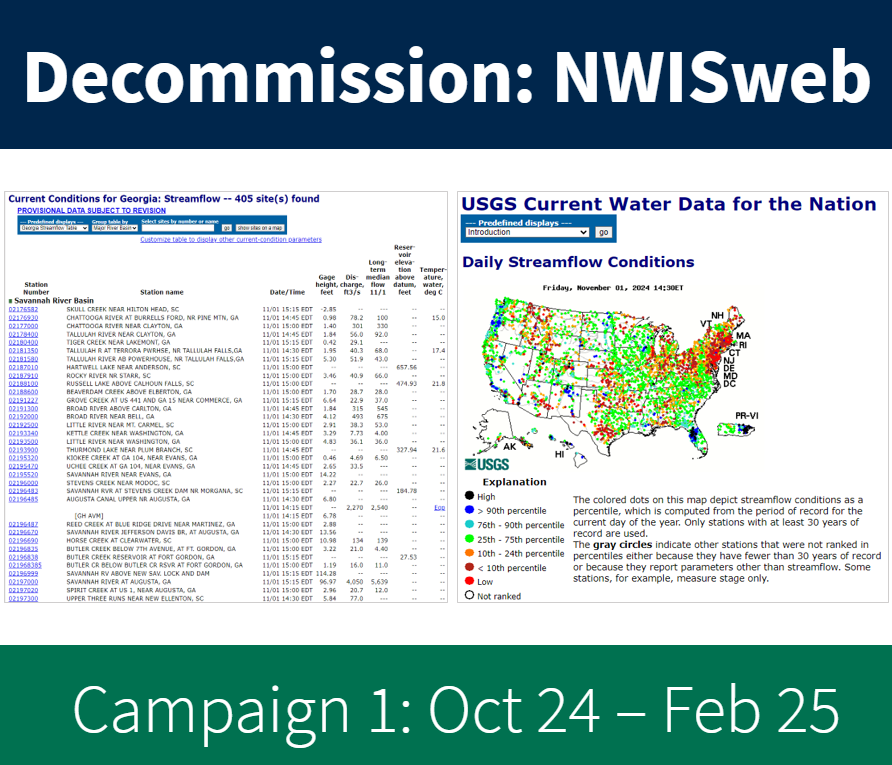
Details of NWISweb Decommission Campaign 1 from October 2024 to February 2025

Details of NWISweb Decommission Campaign 1 from October 2024 to February 2025
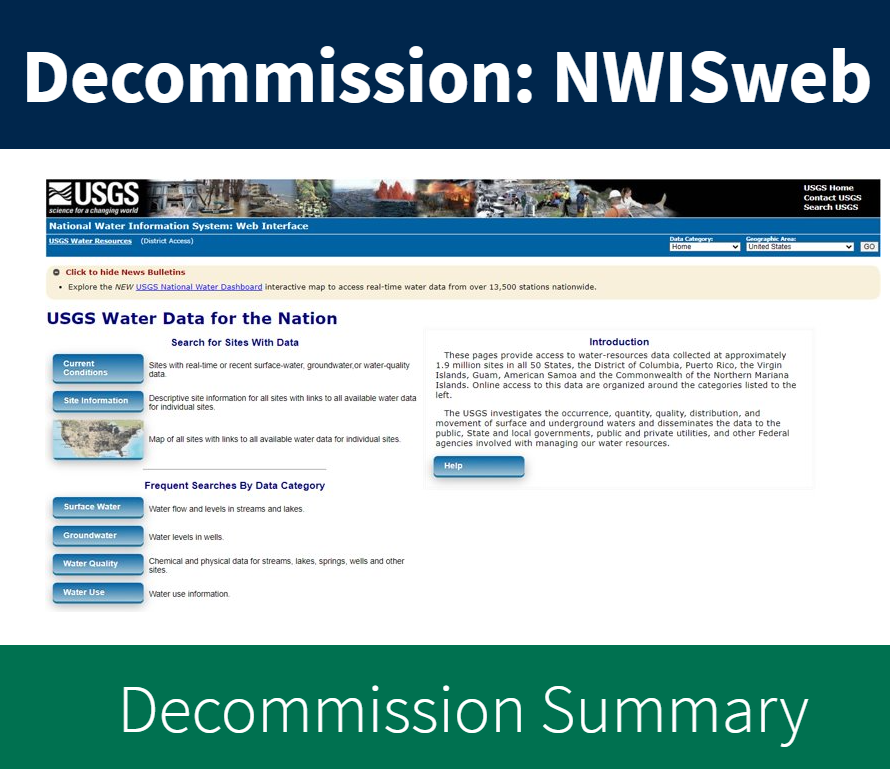
Summary of the NWISweb webpage decommissions ongoing from October 2024 through February 2027
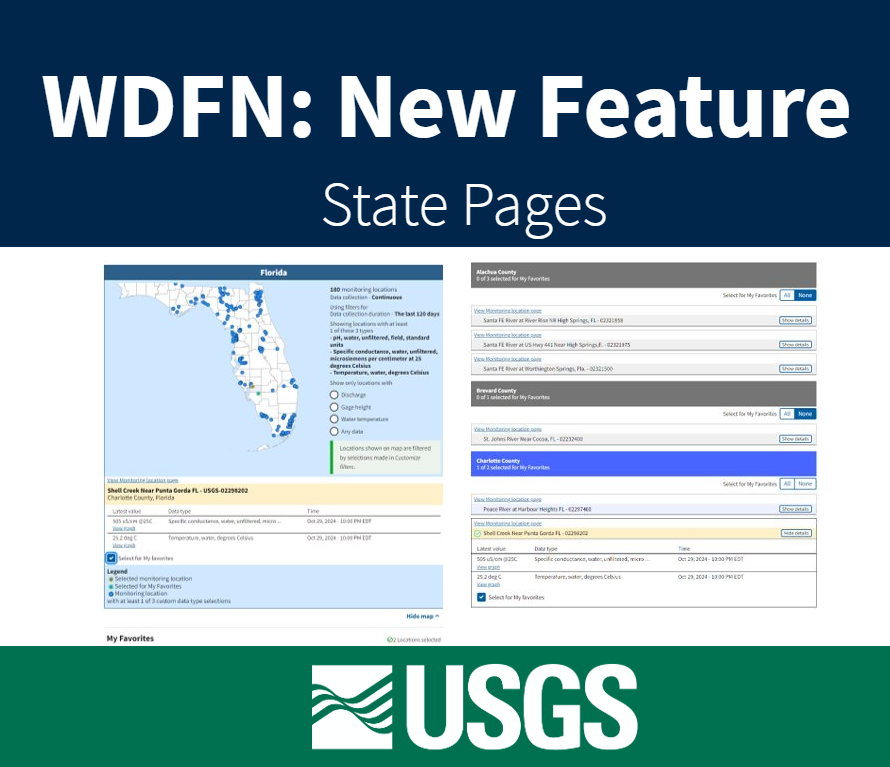
Feature to see current water conditions from all monitoring locations in a state that collect continuous data.
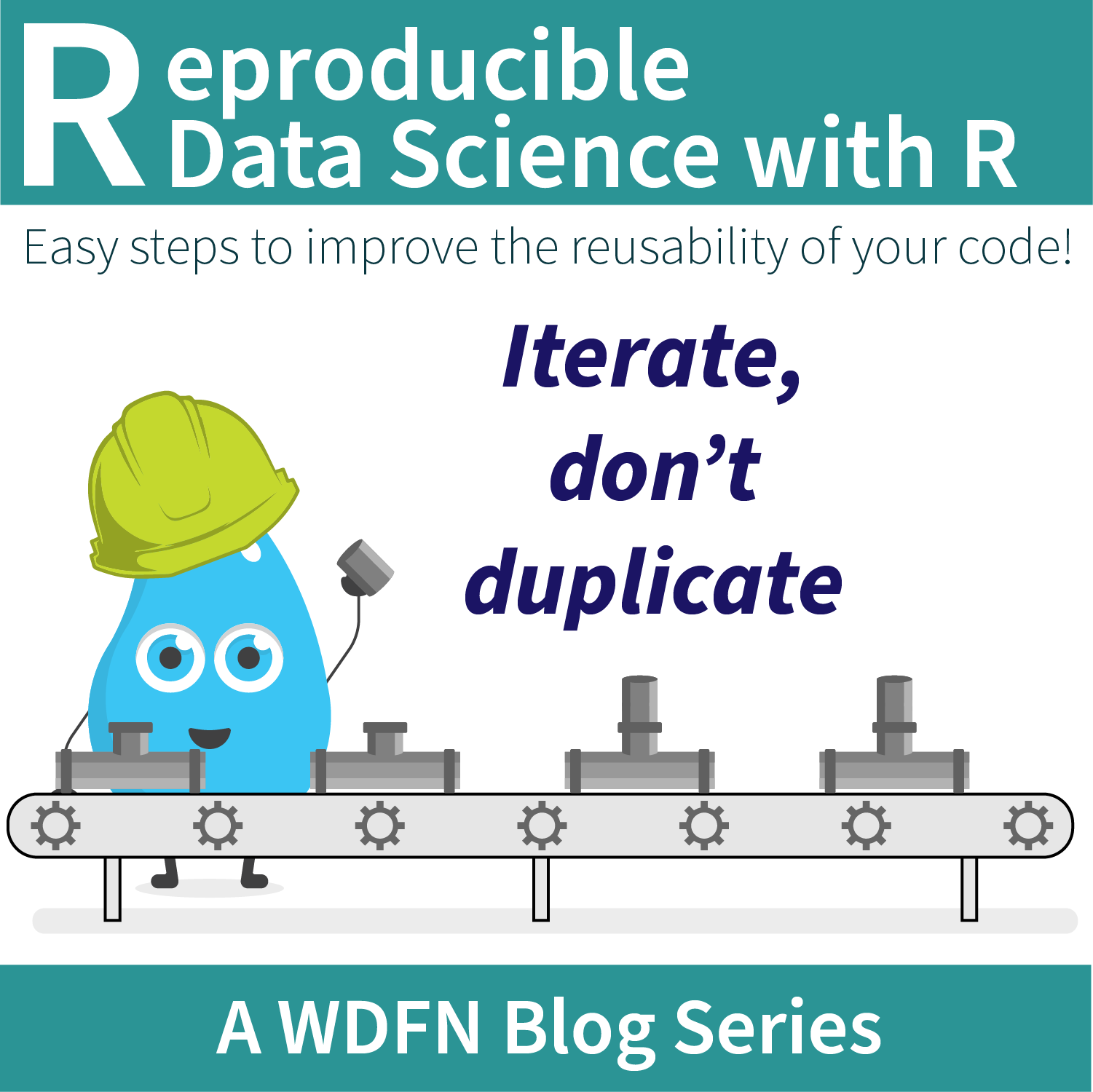
Iterate your R code using the map() function from the purrr package.
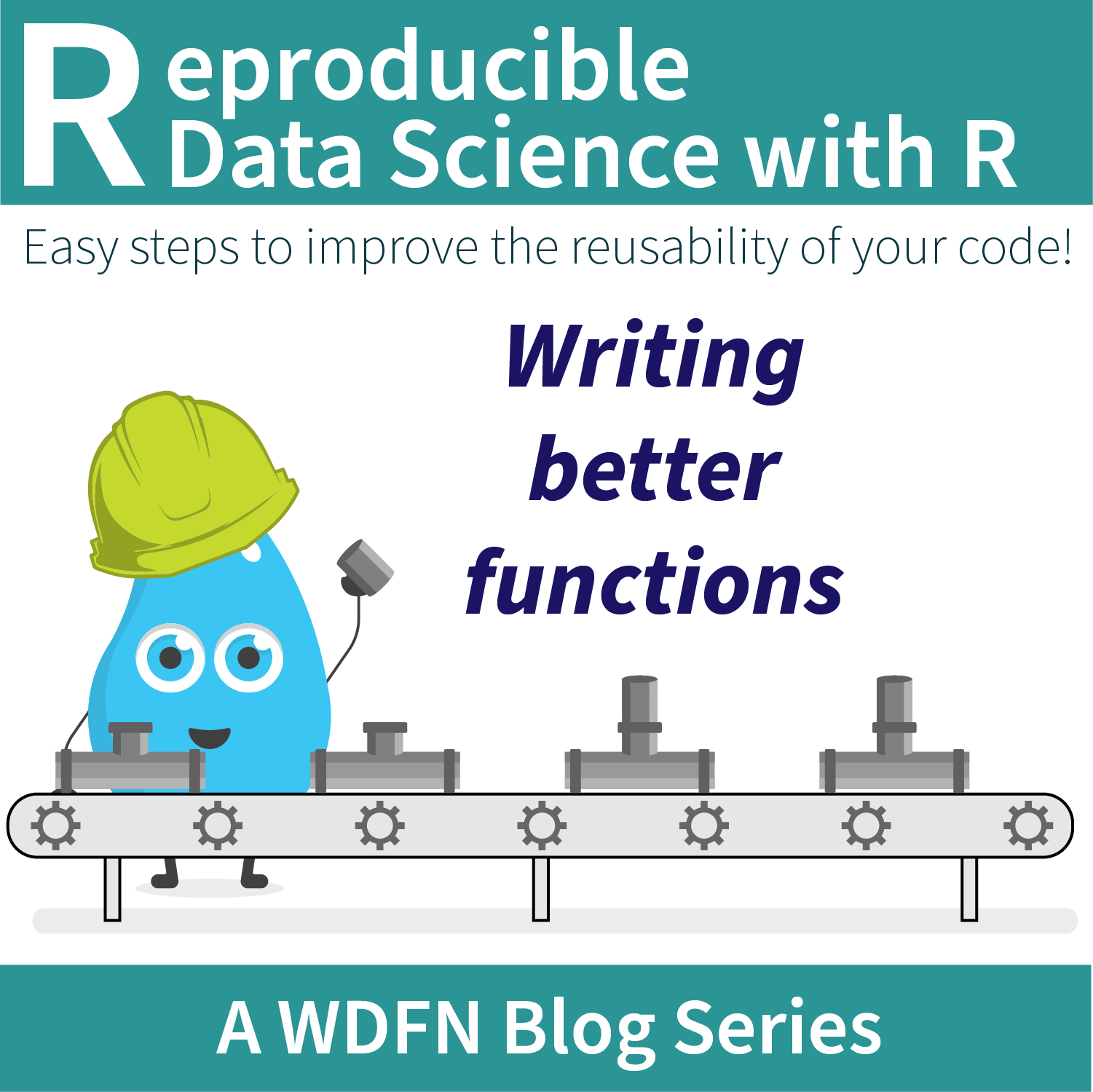
Write functions in R that run better and are easier to understand.
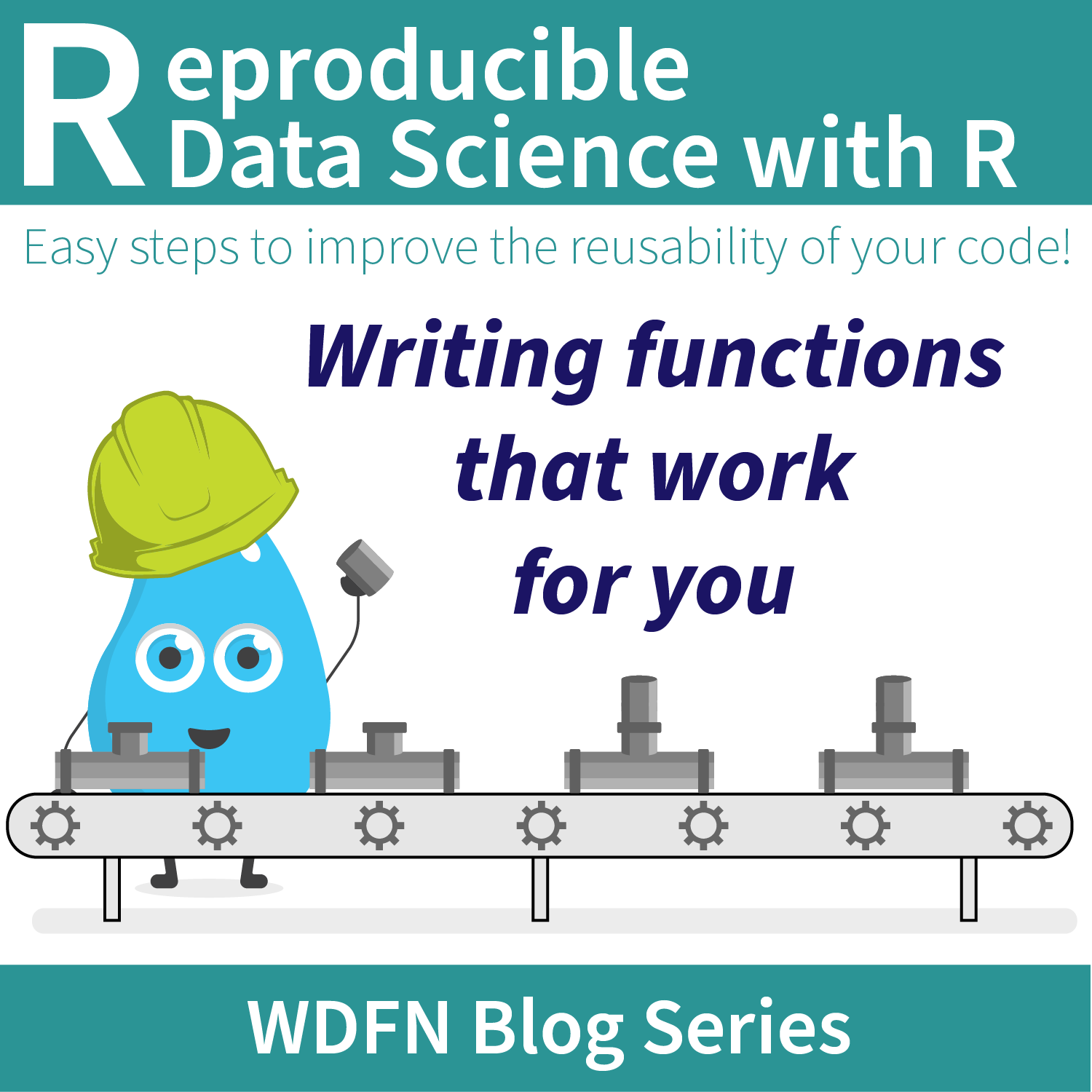
Learn the ropes building your own functions in R using water data examples.
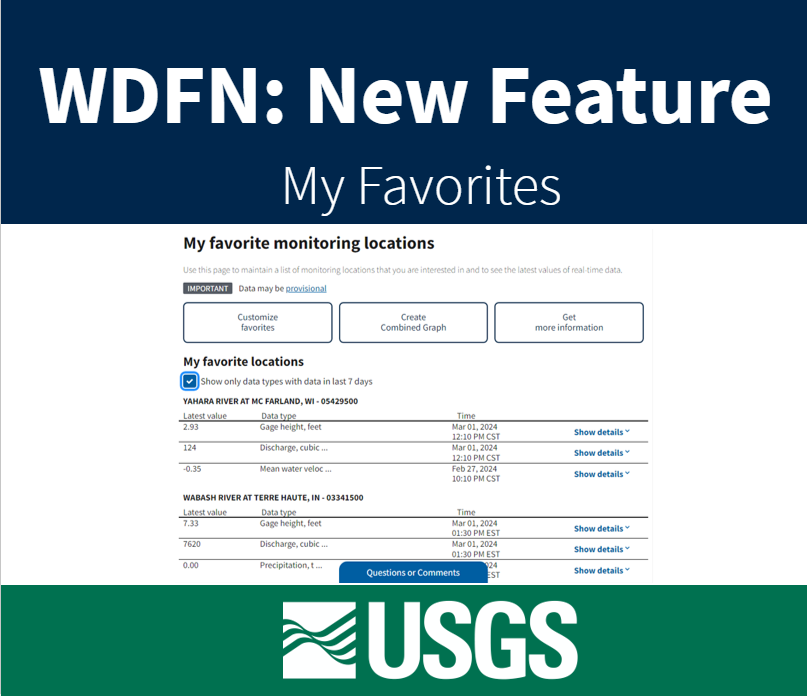
Feature to maintain a list of monitoring locations you are interested in and to see the latest values of real-time data.
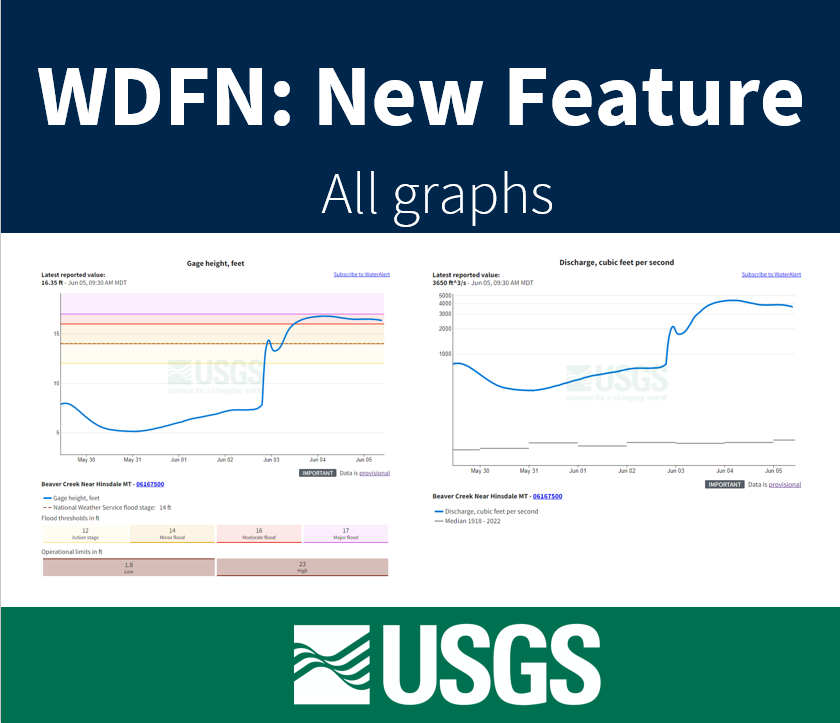
Feature to see a series of graphs of all current sensor data collected at a single location is available now.
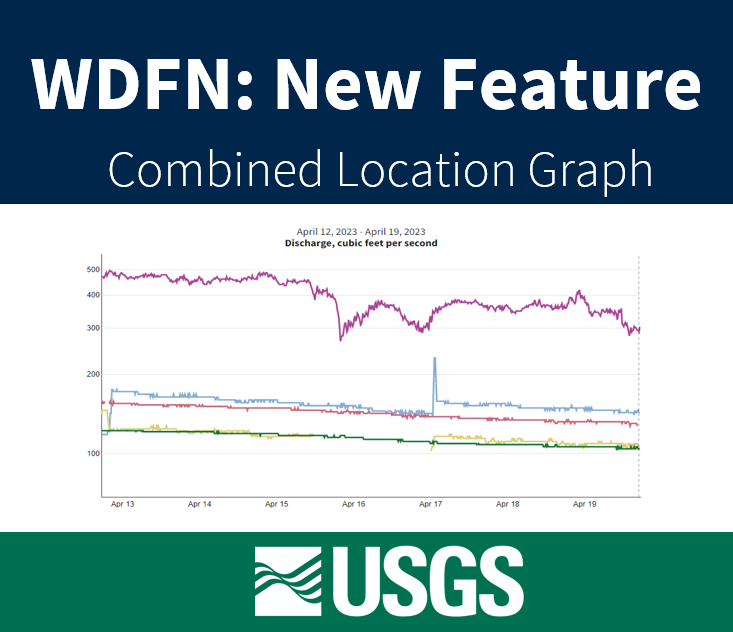
Graphing data for 5 locations on a single graph now available on WDFN
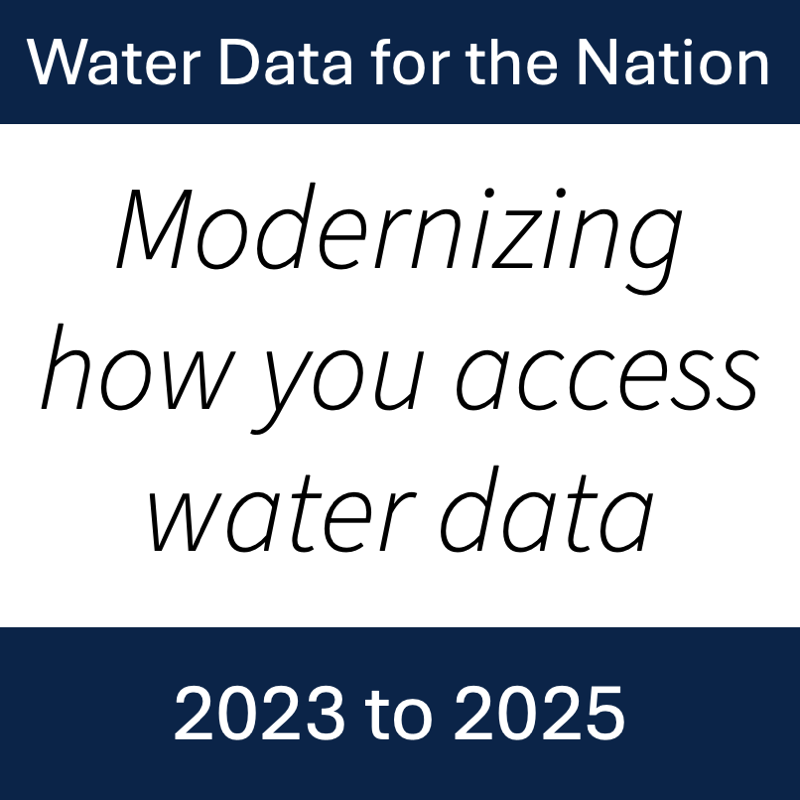
A look into the current and coming soon features available in WDFN. Updated in 2025 to highlight progress and include links to new features